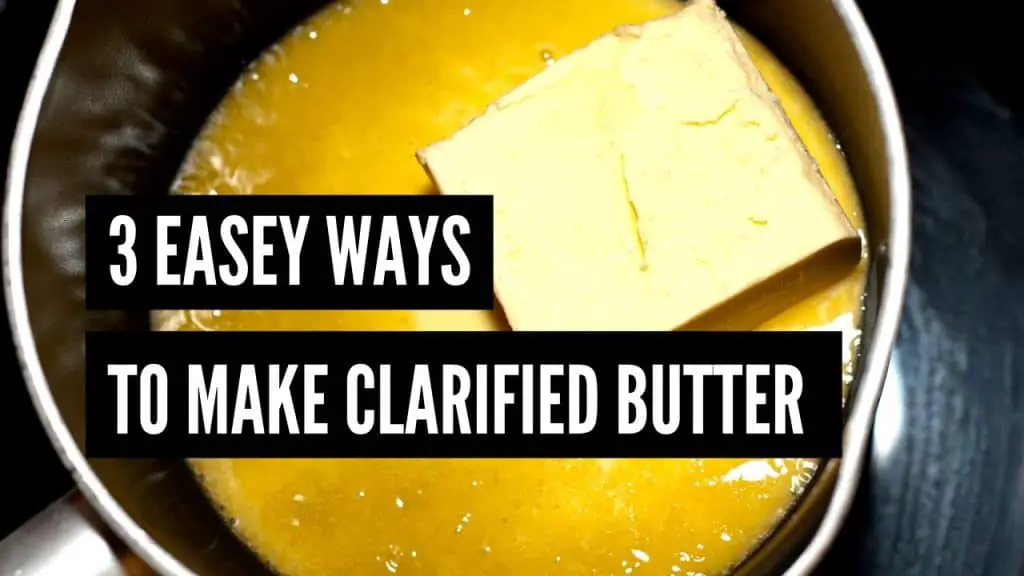Clarify Like a Pro: How To Clarify Butter Without Cheesecloth.
If you have ever used butter to make pancakes or French toast, you know that butter will smoke and burn quite easily. When frying on a hot pan, the milk solids in the butter start to burn quite fast.
A little butter in your food is undoubtedly a good thing, but when it starts to smoke and blacken, you’ll be in trouble. Your pancakes will be burnt, bitter, and stuck to the pan, and the kitchen will be filled with smoke. Not ideal!

To avoid all that mess and still enjoy a delicious buttery taste, all you need to do is clarify your butter before you use it for frying or any other high-temperature cooking.
What Is Clarified Butter?
Butter contains approximately 80-82% butterfat,16-17% water, and 1-2% milk solids, depending on the brand. When it is clarified, the water and milk solids are removed, leaving 99-100% pure butterfat – also known as liquid gold.

Butter that is clarified has a high smoke point of 482°F (250°C), compared to unclarified butter’s smoke point of 293°F (145°C). This means that it doesn’t burn as easily as regular butter, and it is preferred when sautéing and frying. It is very popular in French and Indian cuisine.
Read Also: Best High Smoking Point Oils For Frying.
What Are the Benefits of Clarifying Butter?
There are several benefits of clarifying butter, which include:
- A higher smoke point than regular butter.
- Longer shelf-life and no refrigeration necessary.
- Milk solids are removed, so there’s no dairy, which is ideal for you if you are lactose intolerant.
- It contains higher amounts of vitamins A, D, and E.
- It has a richer and creamier taste when clarified.
Can You Buy Clarified Butter?
You might be able to purchase clarified butter in grocery stores, health food stores, and online. However, it is not always available is supermarkets. You can purchase a really good quality Ghee (below) from Amazon that comes from hormone-free and grass-fed cows, and although it is smooth and creamy, it is rather expensive.
TAP ON IMAGE TO VIEW PRICE
If you can’t find it in your local supermarket or don’t want to spend a lot of money on it, you can always purchase regular butter and make it yourself. The process of removing water and milk solids is quite easy – just follow the instructions below.
How to Clarify Butter Without Cheesecloth?
Here is the basic clarification method that is most used, followed by different ways to remove the foam and milk solids.
The approximate time to make it is 30 minutes.

- Take a pot or heavy-bottom saucepan and slowly melt the unsalted butter over low heat. Don’t stir.
- As it melts, carefully skim the white foam that rises to the surface with a Slotted Spoon, skimmer, or ladle.
- Once it begins to boil, keep skimming off all the white foam that is rising to the surface. This step should take about 5-10 min.
- Carefully pour the top layer – the liquid golden butterfat – into a bowl, jar, or container for storage. Make sure to leave the leftover milk solids at the bottom of the pan.
Using Cheesecloth
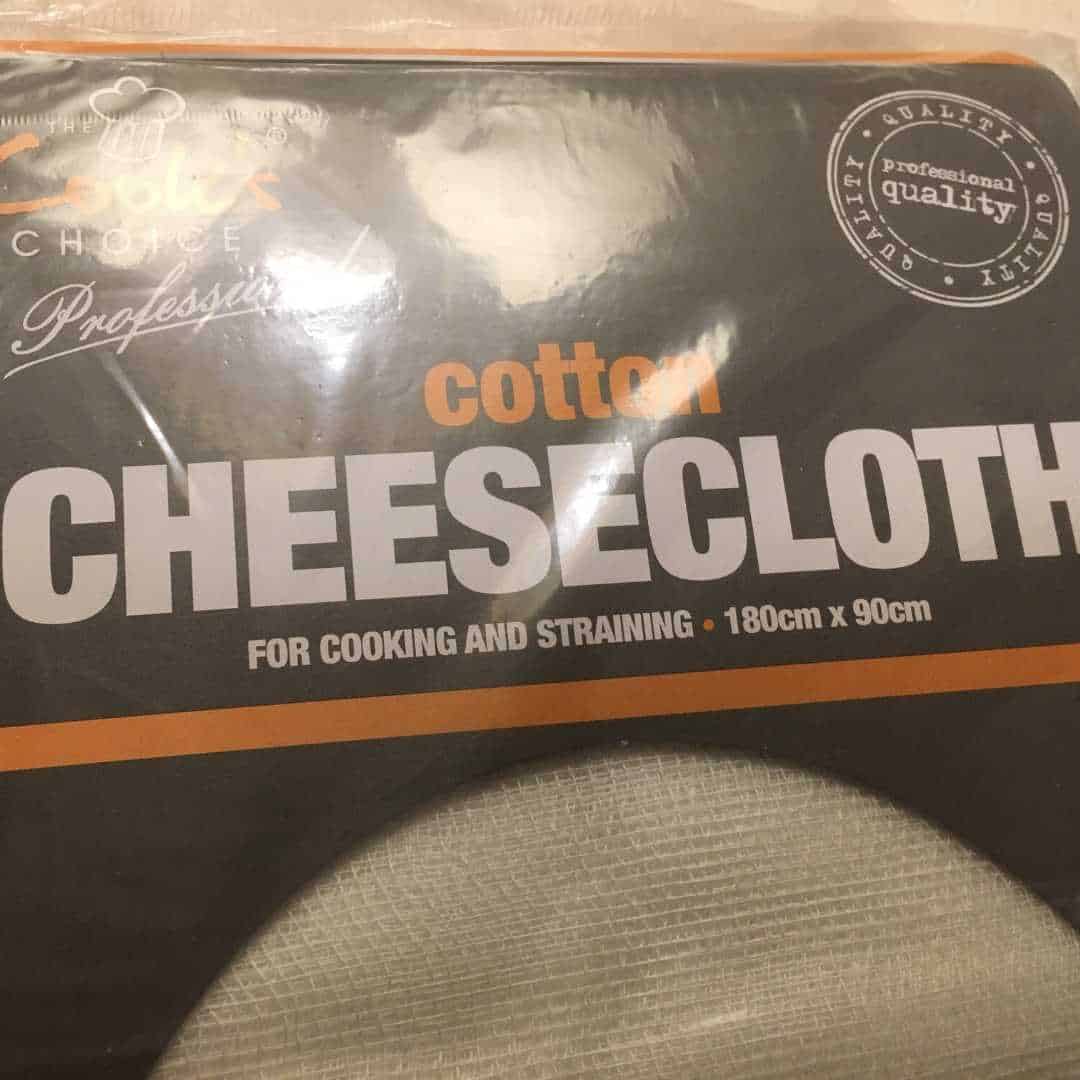
In addition to just skimming the white foam as the butter is melting, you can filter it through cheesecloth.
- Melt and skim as much of the foam as possible, as instructed above.
- Line a fine-mesh or regular strainer with layers of cheesecloth.
- Tilt the pan very gently and carefully pour the melted butterfat through the cheesecloth.
- If there are a lot of leftover milk solids at the bottom, don’t pour them through the cheesecloth; just discard them.
If you don’t have a cheesecloth to strain the foam and solids at the end, you can just use the fine-mesh strainer on its own or a tea strainer lined with a coffee filter.
A less effective method is to wait until the butter is melted, pour it into a container, and let it separate while cooling. Once it cools into a solid form, scrape the hard foam off the top.
Keep in mind that the more milk solids you remove, the more clarified the butter is, and the better it is for frying. It will also keep for longer.
Clarifying Butter in the Microwave

Technically, you can also clarify butter in the microwave.
- Take a deep, microwave-safe bowl.
- Microwave it until the butter is completely melted.
- Remove it from the microwave and let it sit for 5 minutes while all the milk solids and water settle to the bottom.
- Skim off all the froth on the top.
- Slowly pour off the clear butterfat into the jar or a container (use a cheesecloth or coffee filter if you have any).
- Leave the leftover milk solids in the pot.
I have personally never used a microwave to do it as I don’t have one, but it seems that it requires a bit more trial and error. I would recommend that you stick to the stove method.
Can I Use Salted Butter?
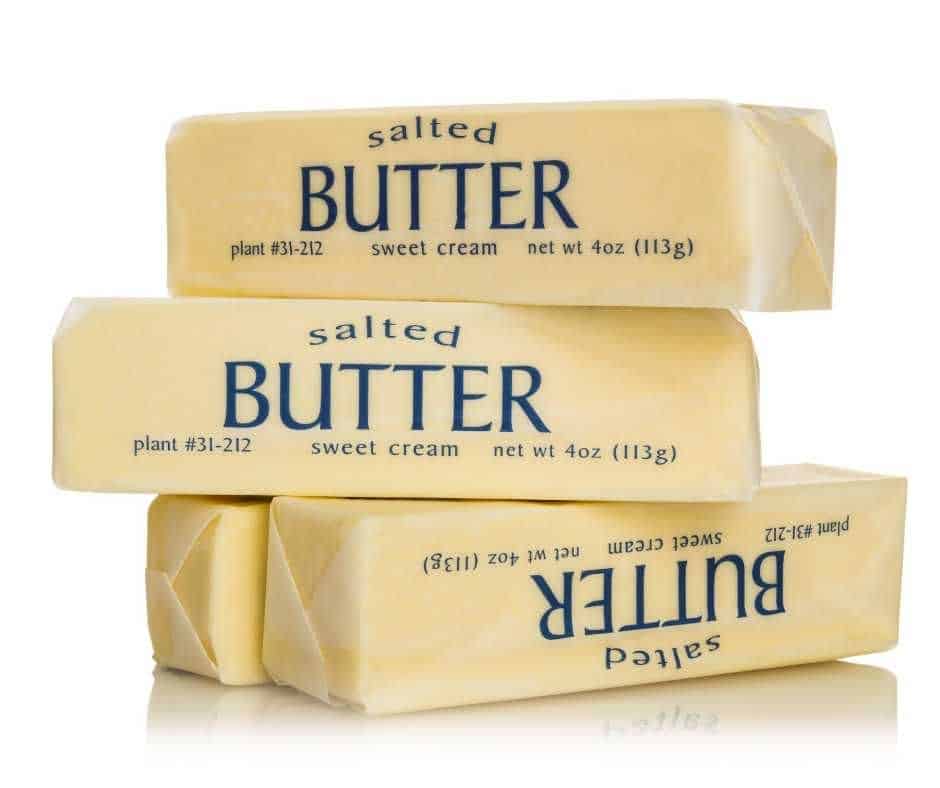
You can use salted butter, but most professional chefs recommend not to use it. Doing so makes the salt more concentrated and limits the result to savory recipes. Also, salts tend to make it slightly harder to remove all the milk solids effectively.
How Much Should I Make?
Determining how much butter you should make depends on the amount you need for a recipe. To get an idea of how much you will yield, 1 pound before clarification gives you approximately 12 ounces after.
A good rule of thumb is to add 25% more regular butter to get the clarified amount that is called for in a recipe.
But if you are like me, who is using clarified butter on a regular basis, then you can do a bigger batch that will last you for weeks or months.
What Does It Taste Like?
When clarified the traditional way, the taste is creamier, richer, and has a more pronounced buttery taste. Ingredients can be added to change the taste, but the buttery undertone is still distinct.
What Is Clarified Butter Used for?

This “liquid gold” is used:
- As a substitute for people that are lactose intolerant.
- As a glossy coating for pasta and grains.
- For sautéing vegetables and meats.
- For frying foods like French fries.
- For making sauces, such as hollandaise sauce and dipping sauce for lobster or crabs.
- In medicinal and therapeutic circumstances (as ghee).
- It is a great addition to coffee.
- On rice, warm pasta, or fresh hot, and buttery popcorn.
- As a base for herbal ointments.
Why Is It Used in Coffee?
If you are lactose intolerant or on the keto diet yet enjoy lattes, you can add a tablespoon of clarified butter to your coffee to create a frothy beverage. This will give it a nuttier and sweeter flavor, without the dairy.
Is Ghee the Same Thing?

The two terms are commonly used interchangeably; however, there is a difference between ghee and clarified butter. Ghee is a type of clarified butter that is cooked longer to give it a darker hue and a distinct nutty flavor.
This type originated over 5,000 years ago in ancient India. It is typically used in south-eastern Asian, Middle Eastern, and Indian cultures as an ingredient in cuisine, medicines, and religious rituals.
Other Variations to the Basic Recipe
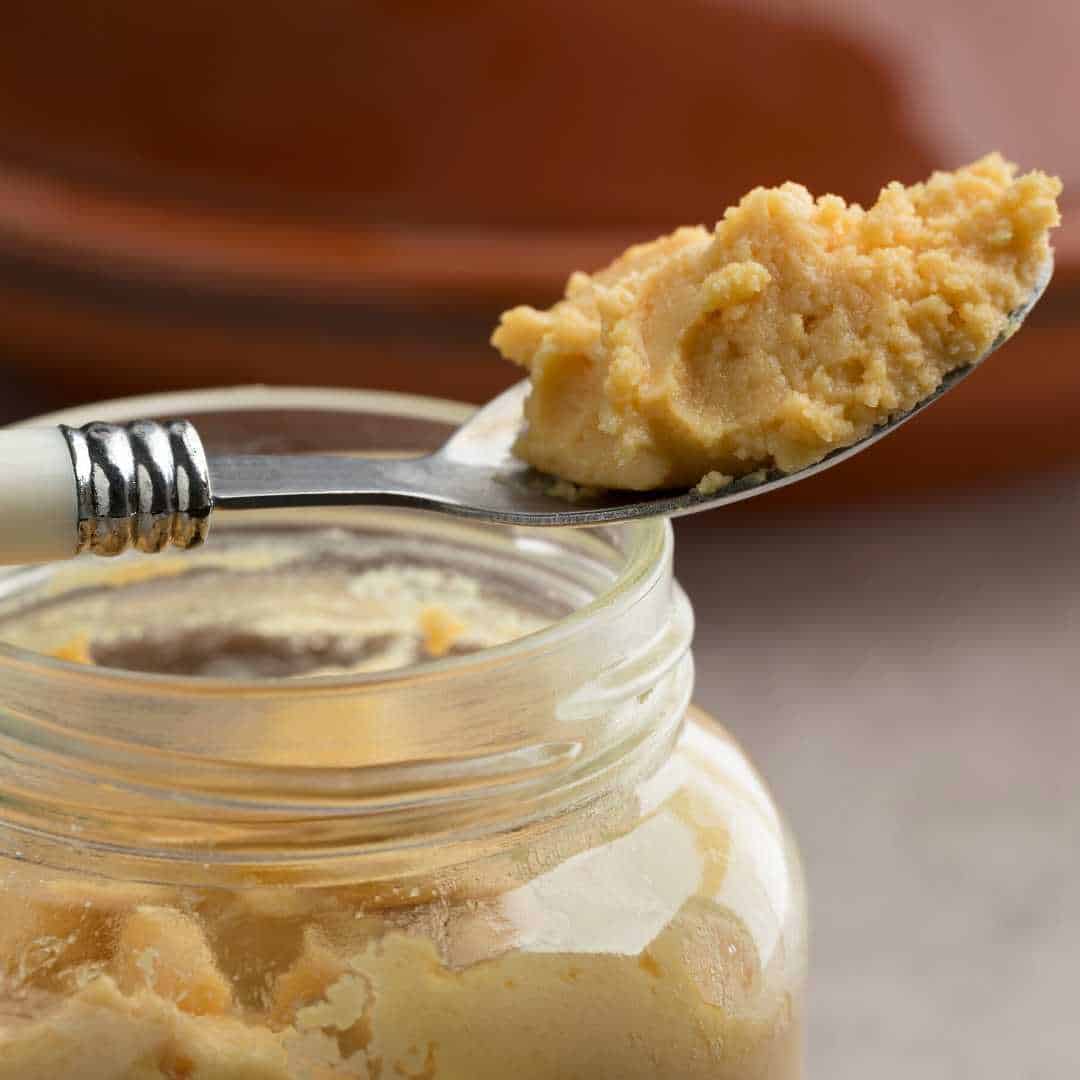
Traditional fermented and salted Yemeni Smen.
Aside from ghee, many variations are used around the world. Here are the common variations used in other cultures:
- Niter Kibbeh: This is an Ethiopian version with added spices, including fenugreek, cumin, turmeric, cinnamon, or nutmeg, added before straining.
- Smen: This fermented version is used in Yemeni, Middle Eastern, and North African cuisines. It has a taste that is similar to blue cheese.
- Manteiga-da-terra: Also known as Manteiga-da-garrafa, this form originates from Brazil. The flavors in this version are reminiscent of cheese and fish.
The Ethiopian version is widely used.
Here is a quick recipe for making Niter kibbeh:
After straining the foam and milk solids, add the following ingredients to the butter:
- 1 minced onion
- 2 garlic cloves minced
- 1 teaspoon dried ginger
- 1/2 teaspoon fenugreek seeds
- 1/4 teaspoon ground cardamom
- 1/2 teaspoon ground turmeric
- 1/2 teaspoon cumin
Instructions
- Cook on a low simmer for 15 mins.
- Remove from heat and let it stand to cool.
- Strain using a fine-mesh strainer or cheesecloth.
Cover and chill. It is good for 2-3 weeks in the refrigerator and up to 2 months when frozen.
How Is Clarified Butter Stored?
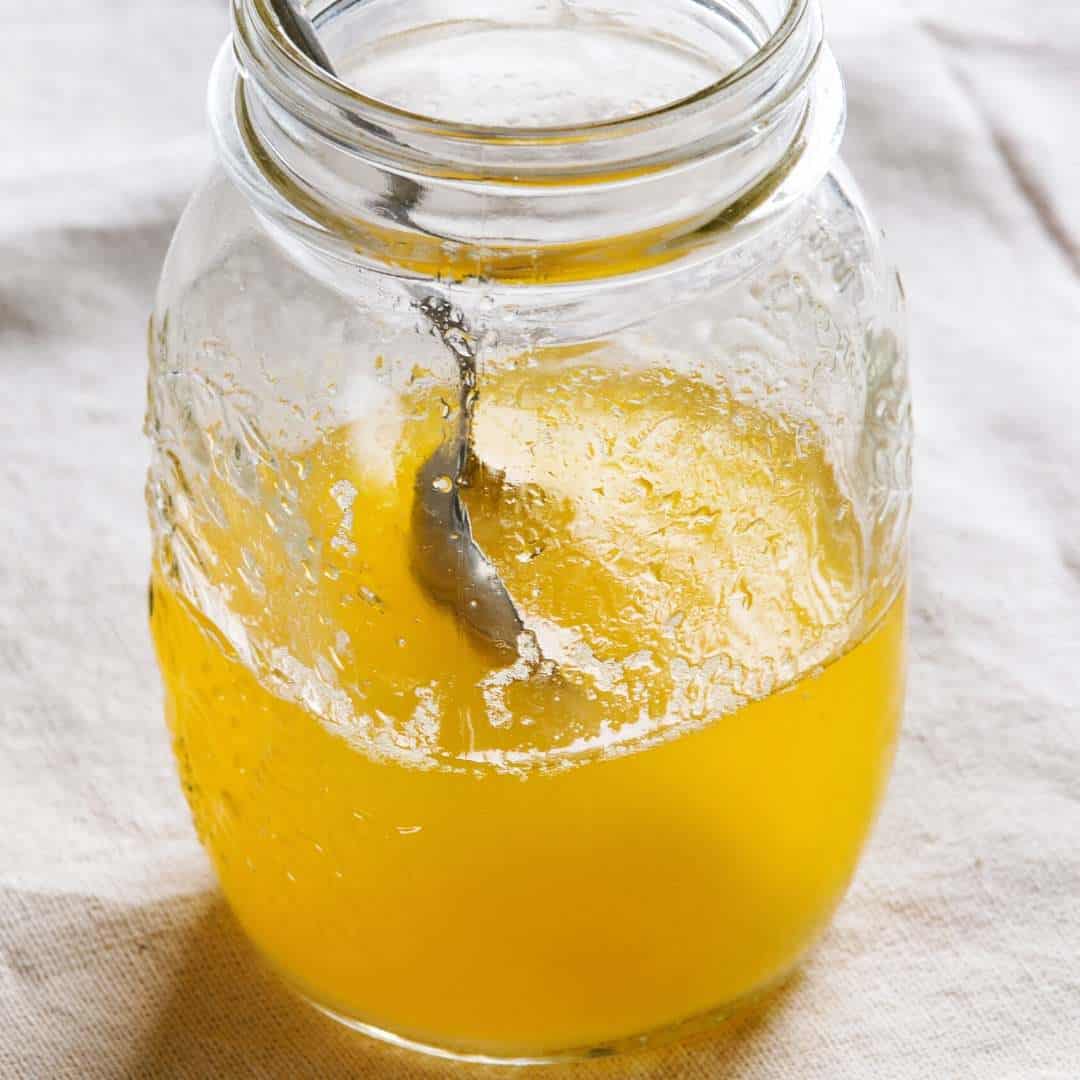
Clarifying butter gives it a longer shelf life because the milk solids are removed. It can be stored in a glass jar at room temperature for up to 6 months or covered and stored in your refrigerator for up to a year. Ensure that you keep it covered because any droplet of water or food can encourage bacteria growth.
Read Also: Can You Freeze It In A Plastic Tub?
How Can I Solidify It?
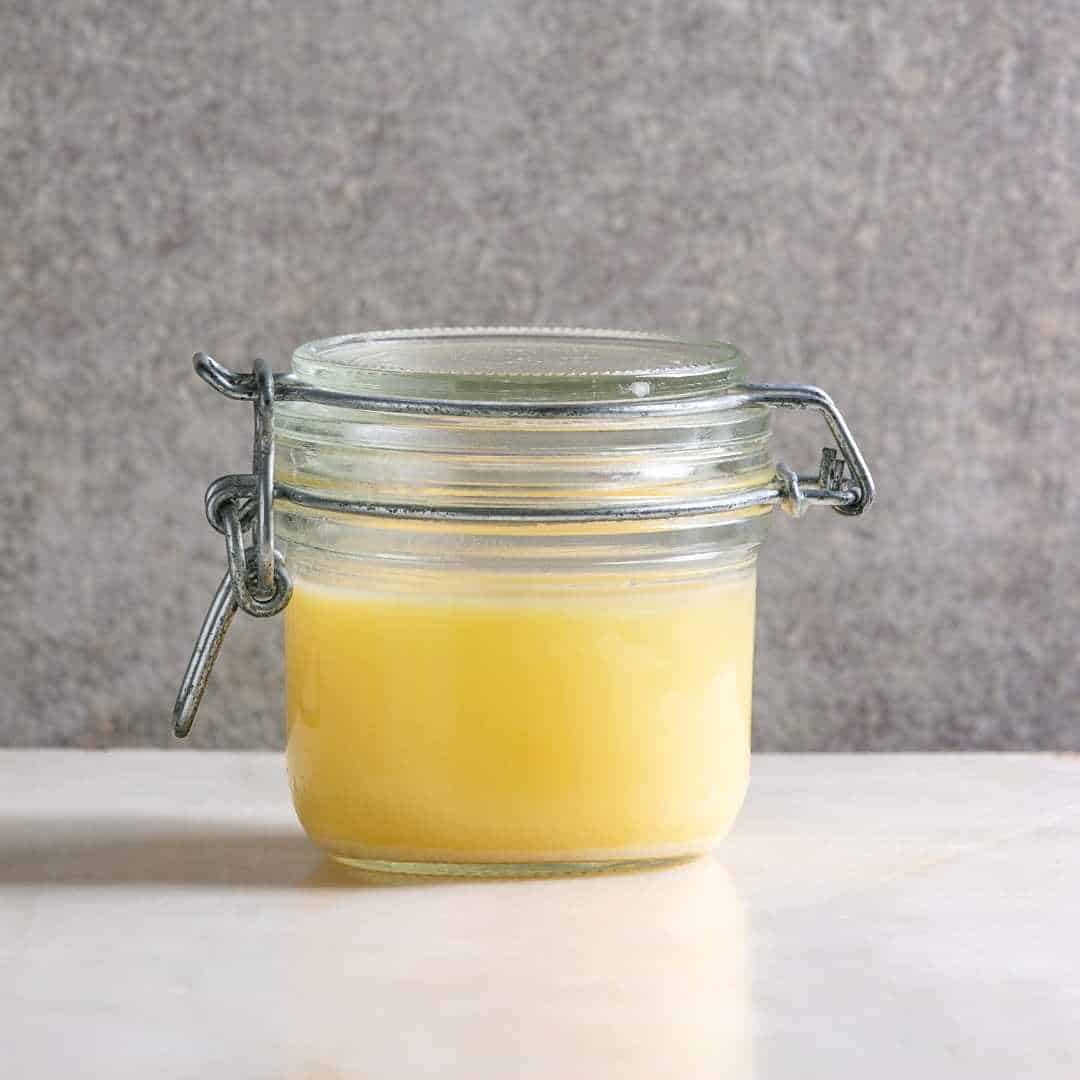
You should chill the butter if you want to have it in solid form, or store it at room temperature to keep it soft or semi-solid. You can always heat it if you want to use it in liquid form.
Substitutes for Clarified Butter
If it is not readily available and needed for a recipe, you can substitute it in several different ways.
Here’s what you can use as a substitute:
- Olive oil
- Canola oil
- Vegetable oil
- Cooking spray
- Extra virgin olive oil mixed with regular butter
Read Also: Best Egg Substitutes For Making Pancakes
In Conclusion
Clarified butter is a versatile and flavorful ingredient that can be used in many different types of cooking. Removing the milk solids and water from the butter creates a pure, golden liquid perfect for frying, sautéing, and baking.
While traditional methods of making clarified butter may involve using cheesecloth, alternative techniques include using a fine mesh strainer or simply allowing the mixture to settle and pouring off the clarified butter.
It is important to take care when making clarified butter to avoid burning the milk solids and to ensure that the butter is fully clarified. With a little patience and attention to detail, anyone can make delicious clarified butter at home.


